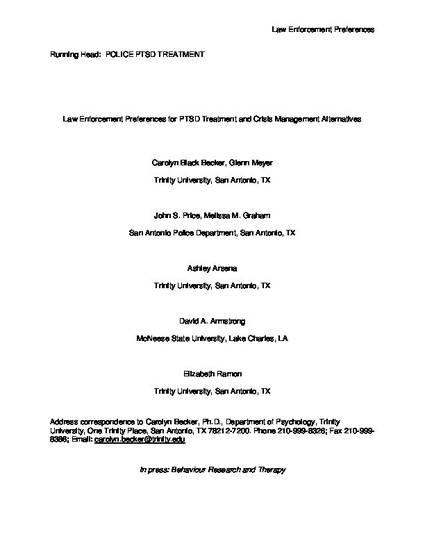
Evidence-based treatments (EBT) for posttraumatic stress disorder (PTSD) remain underutilized. Analog research, however, indicates that patients may be more amenable to receiving EBT for PTSD than utilization rates suggest. This study sought to extend previous studies by investigating PTSD treatment preferences among law enforcement individuals (i.e., active duty officers, cadets, criminal justice students). We asked 379 participants, with varying trauma histories, to read a police traumatic event and imagine they had developed PTSD. Participants rated the credibility of six treatment options which they might encounter in a treatment setting, and chose their most and least preferred treatments. Next, they evaluated a widely used debriefing intervention aimed at preventing PTSD. Almost 90% of participants chose exposure or cognitive processing therapy as their first or second most preferred treatment, and they rated these interventions as significantly more credible than the other 4 treatment options. The sample showed ambivalence regarding the perceived efficacy of debriefing but found the rationale credible. This study supports previous analog research indicating that patients may be more interested EBT than indicated by utilization rates, and suggests that law enforcement departments should consider offering EBT to officers who develop PTSD.
